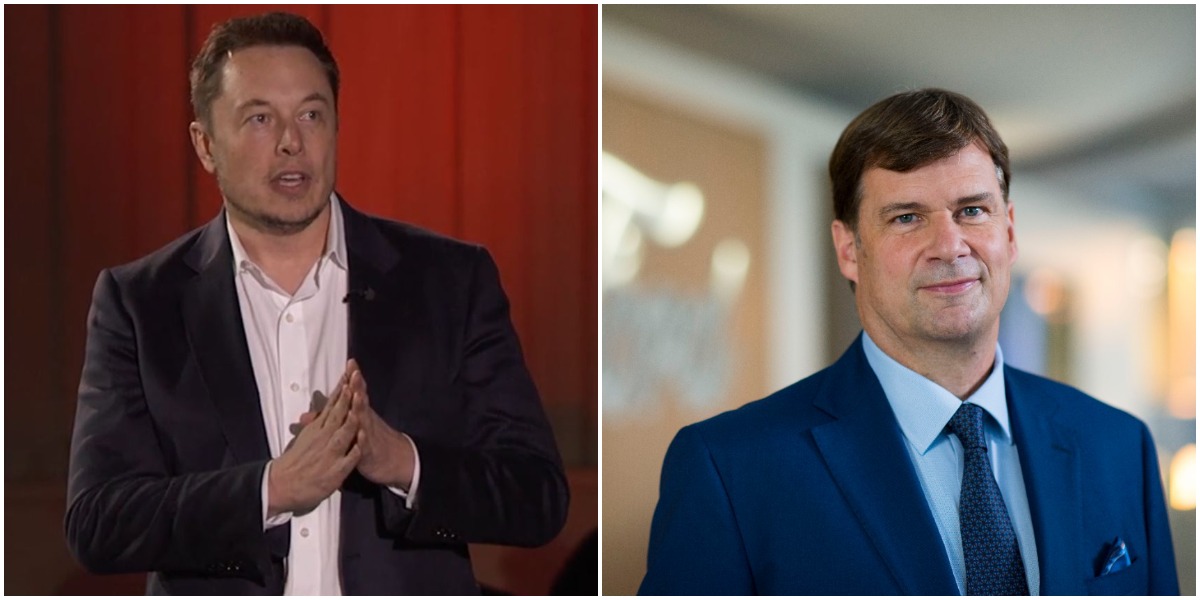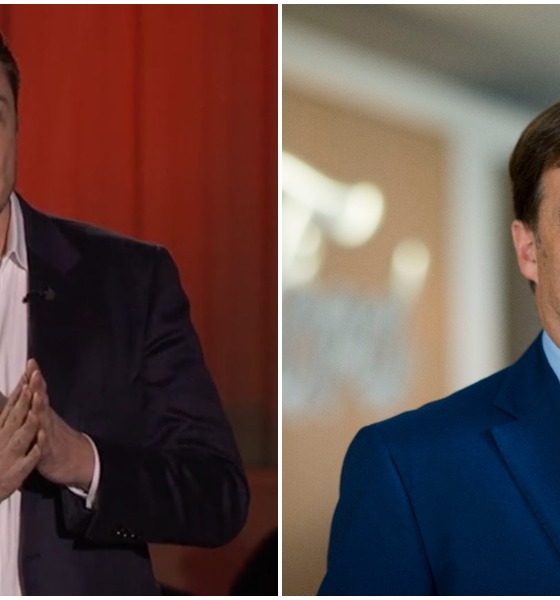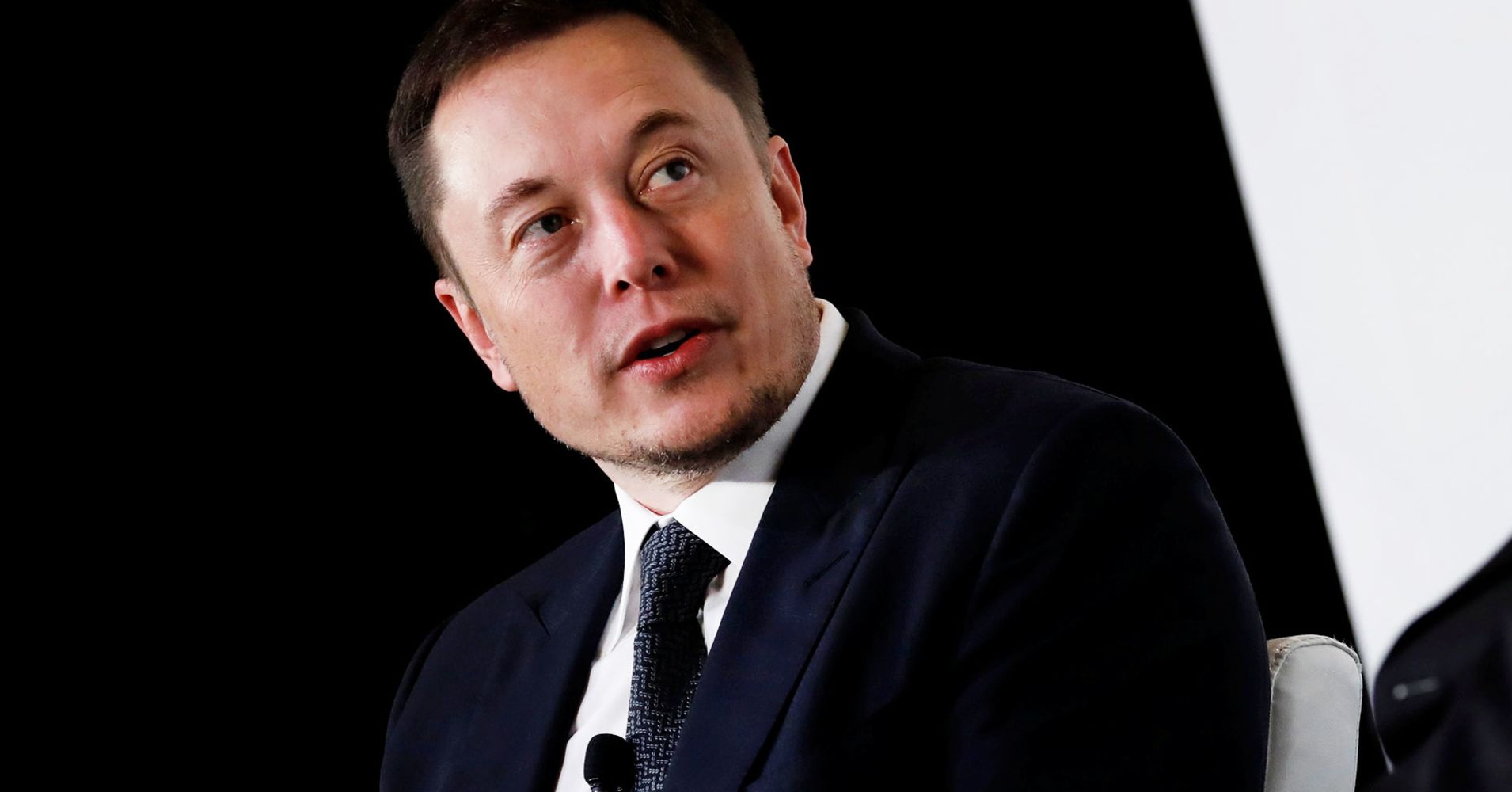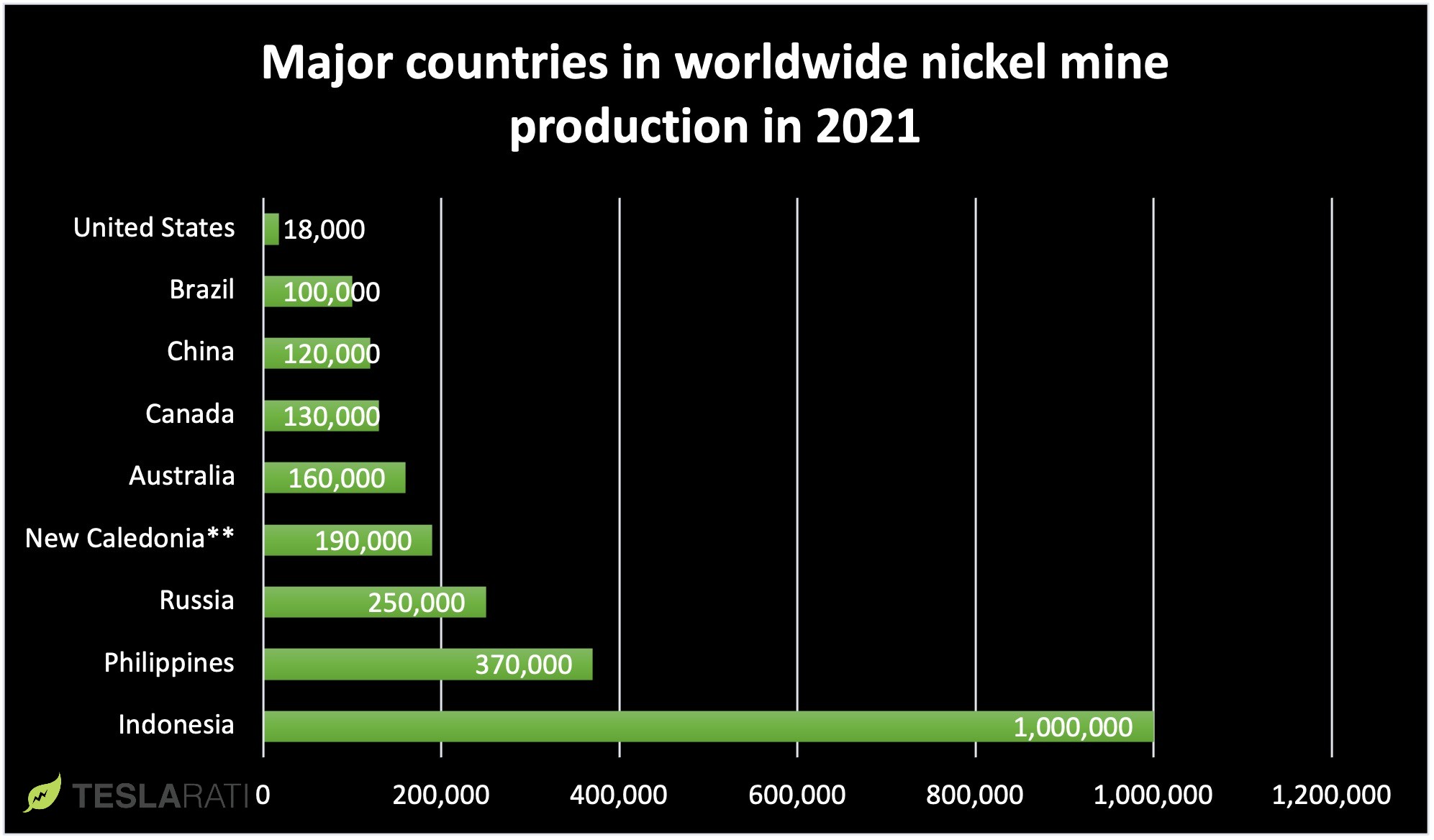

News
Nickel expert calls on Musk, Farley, others to demand Nickel sourcing in North America
Surging prices of nickel, a potentially major influence in the future of the global electric vehicle market, have encouraged one mining expert in the field to call on automotive CEOs to demand more attention toward sourcing the metal in North America.
Nickel and its appeal to EVs
Nickel has been a significant talking point of many automotive CEOs for about two years as its wide availability could alleviate battery manufacturing bottlenecks for cells containing either controversial or hard-to-obtain rare earth metals. Tesla CEO Elon Musk first discussed nickel mining during an Earnings Call in mid-2020. Musk pledged a massive contract to any company that could supply nickel to Tesla, as long as it was sourced efficiently and sustainably.
“Well, I’d just like to reemphasize, any mining companies out there, please mine more nickel, OK?” Musk said on the call. “Wherever you are in the world, please mine more nickel, and don’t wait for nickel to go back to some long — some high point that you experienced some five years ago or whatever. Go for efficiency, as environmentally friendly, nickel mining at high volume. Tesla will give you a giant contract for a long period of time if you mine nickel efficiently and in an environmentally sensitive way. So hopefully, this message goes out to all mining companies.”
Tesla CEO Elon Musk called on companies to mine more nickel, promising a “massive contract” during the Q2 2020 Earnings Call.
Musk eventually landed a nickel supply deal with Minnesota-based Talon Metals in January. It was the first major nickel supply deal Tesla landed and could be a monumental development in the production of EV battery cells.
Nickel increases energy density and therefore driving range, which is an essential metric for EV owners. Despite Elon Musk’s recent claim that too much EV range is counterproductive because it takes away from the performance, a small poll I ran on Twitter seemed to show that people were more concerned about range than performance. Two-thirds of respondents claimed they would sacrifice performance for more range. Despite Tesla’s high-range cars, which are only eclipsed by the Lucid Air’s premier Dream Edition trim, cold weather climates have shown to be one of EV range’s biggest foes, consistently trimming range estimations due to inefficient battery heating.
Soaring prices: $30k to $100k in the blink of an eye
Following a short squeeze on Nickel on the London Metals Exchange, the cost of a metric ton of the metal surged $70,000. Trent Mell, critical mineral expert and CEO of Electra Battery Materials, spoke to Teslarati last week regarding the price surges, which have him ready to make a proposal to automotive CEOs. “I would encourage the big names: Musk, Farley, Barra, to start demanding Nickel sourcing in North America,” Mell said.
According to Statista, Canada is the sixth-biggest producer of nickel globally, with 130,000 metric tons of the element produced in 2021. The United States ranked tenth on the list, with 18,000 metric tons. Mell believes, while North America has a low contribution rate to the global primary nickel supply, there is potential for extreme growth.
“North America currently only contributes around 4% of global primary nickel,” Mell said. “There is no immediate North American solution to growing nickel demand, but we anticipate that the construction of processing capacity on the continent will act as a catalyst to bring more primary nickel, in the form of mining operations, online in coming years so that North America can become increasingly self-reliant on domestically sourced raw materials. There are ample, good-quality nickel projects in North America.”
Nickel is highly-available in Russia, which has had numerous sanctions set by the United States and other governments due to the invasion of Ukraine. According to Mell, nickel in Russia, the third-most available region in the world, is Class 1, which means it is of the highest quality, which is eventually used in EV batteries, among other products. Mell said Nornickel, the country’s leading miner of the metal, exports 96 percent of its product, with 45 percent of that going to Europe.
(Credit: Teslarati) Data provided by Statista
Nickel is going to be a major factor in EV batteries in the coming years. However, automakers have had to adopt different strategies to keep their vehicles flowing off production lines and into customers’ garages. For standard range vehicles, many companies have adopted lithium-iron-phosphate, or LFP, batteries, which are available in wide supply in other markets and offer less range but more affordability. Tesla started transitioning some U.S. Standard Range Model 3 vehicles to LFP cells late last year, as it would reduce wait times. Eventually, it revealed all Standard Range vehicles would equip the LFP chemistry.
However, Mell does not believe LFP is a solution in the long term.
“We used to refer to LFP cells as ‘golf cart batteries,’” he said. Referring to the cell as a “half-hearted solution,” Mell understands the use of LFP for entry-level vehicles but knows nickel is the real solution, which led him to consider proposing industry-leading CEOs to push President Joe Biden to discuss more options in either domestic or, at least, North American mining projects.
Nickel is also easier to recycle and can be easily refined into new cells. Swedish company Northvolt successfully built a cell from recycled nickel last year.
What can consumers expect from the Nickel price hikes?
Mell is adamant that the current levels of nickel on the LME are not sustainable. “I would encourage consumers to wait about six months. Then we’ll see prices drop back to normal levels,” he said. However, as some analysts pointed out, the spikes in price could add between $750 and $1,000 per vehicle in the short term.
Musk said earlier this week that “significant inflationary pressure” was affecting both Tesla and SpaceX, which hinted toward price increases on the company’s vehicles. Last night, Tesla applied price increases to all four of its all-electric vehicles, with the Model X Plaid variant receiving the most substantial surge: $12,500.
I’d love to hear from you! If you have any comments, concerns, or questions, please email me at joey@teslarati.com. You can also reach me on Twitter @KlenderJoey, or if you have news tips, you can email us at tips@teslarati.com.

News
Tesla 2025 Holiday Update: Here’s what it includes, and what it’s missing

Tesla has finally announced the features for the 2025 Holiday Update, which includes a wide variety of new inclusions that are both functional and just for fun.
The new features are plentiful, but there were a handful of things we were expecting to see based on what we know. We don’t want to sound ungrateful, because there are a lot of great new things on the way with this update.
Here’s what was included:
Grok with Navigation Commands (Beta)
Grok will now have the ability to add and edit navigation destinations, which is a drastic improvement considering Tesla owners had to use their standard voice commands for this in the past.

The utilization of Grok will likely improve the navigation experience by offering some insight into your destination, including reviews and other points of interest nearby.
It will be enabled by using Grok’s “Assistant” personality.
Tesla Photobooth
“Turn your car into a photobooth! Take selfies from inside your Tesla & give yourself a makeover with fun filters, stickers, and emojis. Share with others right from the Tesla app.”
This feature will be available within the Toybox.
Dog Mode Live Activity
When using Dog Mode to keep your four-legged friend comfortable in the car, you’ll now be able to check in on them as it will share periodic snapshots of the cabin, along with live updates on temperature, battery, and climate conditions.

Dashcam Viewer Update
Dashcam clips are awesome, but they’re void of a lot of information, which could be useful in some instances, especially if there is an accident.

Now, there will be additional details included on each Dashcam clip, like speed, steering wheel angle, and Self-Driving state.
Santa Mode
New graphics, trees, and a lock chime are now available.

Light Show Update
A new Light Show, called Jingle Rush, will be available.
Custom Wraps and License Plates in Colorizer
Colorizer will now be known as “Paint Shop” in the Toybox. You will now be able to personalize your Tesla Avatar with window tints, custom wraps, and license plates. Preloaded designs will be available, but owners will be able to use their USB Flash Drives to create one that suits their style.

Navigation Improvements
Changing the order of your destinations will be easier through a new “Favorites” tab, and Home and Work can now be set by dropping a pin.
There will also be “Suggested Destinations,” which will be determined through recent trips and habits while parked.
Supercharger Site Map
Perhaps the most significant feature of the Holiday Update, Tesla is adding a 3D view of select Tesla Superchargers by tapping “View Site Map.”
When navigating to a location with this capability, the site layout, live occupancy, and nearby amenities will be available. Drivers will also be able to choose which stall to Supercharge.

This is only available at a handful of locations currently, but it will expand to more Superchargers as it becomes more robust.
Automatic Carpool Lane Routing
Navigation will include an option to utilize carpool lanes. Your route will automatically choose the carpool lane when eligible.
Phone Left Behind Chime
If the in-car occupant detection system does not see anyone in the car and there is a phone key, or if a phone is left inside the cabin, your Tesla will chime a few seconds after the doors close.
Charge Limit Per Location
You can now save a charge limit for the current location while parked and it will be applied automatically the next time you charge there.
ISS Docking Simulator
In a SpaceX collaboration, Tesla has added this game to its in-car Arcade:
“Become an astronaut and prove your skills by docking with the International Space Station. Control & guide the rocket in this 3D docking simulator game using a set of controls based on actual interfaces used by NASA astronauts.”
Additional Improvements
-
Enable or disable wireless phone charging pads in Controls > Charging (S3XY) or Controls > Outlets & Mods (Cybertruck)
-
Add Spotify tracks to your queue right from the search screen & scroll through large Spotify playlists, albums, podcasts, audiobooks & your library seamlessly, without paging
-
Take the vibes up another level with rainbow colors during Rave Cave. Accent lights color will change along with the beats of your music. App Launcher > Toybox > Light Sync
-
Lock Sound now includes Light Cycle from Tron Mode. Toybox > Boombox > Lock Sound
What’s Missing
There are a handful of features we expected to see with the Holiday Update, but were not included.
Banish Feature
Tesla has been teasing the Banish functionality for quite a few years, but evidently, it is not quite there yet.
Banish will allow owners to get out of their vehicle at the entrance of their destination, and the car will go find a spot and park itself. Some refer to it as “Reverse Summon.”
Apple CarPlay
With all of the rumors regarding Apple CarPlay and then the evidence that Tesla was working to bring CarPlay to vehicles, we really expected it to come with the Holiday Update.
We’re not upset it’s not here, though. Tesla’s in-car UI is significantly better, at least in our opinion.
Parking Spot Selection
One of the biggest gripes about the new Arrival Features with Full Self-Driving v14 is that choosing a set parking spot is not available. This is especially frustrating for Tesla owners who rent or live in townhouse neighborhoods or apartment complexes with assigned parking.
Tesla seems to be working on this based on the release notes for v14.2, where it said future capabilities would include Parking Spot Selection.
News
Man credits Grok AI with saving his life after ER missed near-ruptured appendix
The AI flagged some of the man’s symptoms and urged him to return to the ER immediately and demand a CT scan.

A 49-year-old man has stated that xAI’s Grok ended up saving his life when the large language model identified a near-ruptured appendix that his first ER visit dismissed as acid reflux.
After being sent home from the ER, the man asked Grok to analyze his symptoms. The AI flagged some of the man’s symptoms and urged him to return immediately and demand a CT scan. The scan confirmed that something far worse than acid reflux was indeed going on.
Grok spotted what a doctor missed
In a post on Reddit, u/Tykjen noted that for 24 hours straight, he had a constant “razor-blade-level” abdominal pain that forced him into a fetal position. He had no fever or visible signs. He went to the ER, where a doctor pressed his soft belly, prescribed acid blockers, and sent him home.
The acid blockers didn’t work, and the man’s pain remained intense. He then decided to open a year-long chat he had with Grok and listed every detail that he was experiencing. The AI responded quickly. “Grok immediately flagged perforated ulcer or atypical appendicitis, told me the exact red-flag pattern I was describing, and basically said “go back right now and ask for a CT,” the man wrote in his post.
He copied Grok’s reasoning, returned to the ER, and insisted on the scan. The CT scan ultimately showed an inflamed appendix on the verge of rupture. Six hours later, the appendix was out. The man said the pain has completely vanished, and he woke up laughing under anesthesia. He was discharged the next day.
How a late-night conversation with Grok got me to demand the CT scan that saved my life from a ruptured appendix (December 2025)
byu/Tykjen ingrok
AI doctors could very well be welcomed
In the replies to his Reddit post, u/Tykjen further explained that he specifically avoided telling doctors that Grok, an AI, suggested he get a CT scan. “I did not tell them on the second visit that Grok recommended the CT scan. I had to lie. I told them my sister who’s a nurse told me to ask for the scan,” the man wrote.
One commenter noted that the use of AI in medicine will likely be welcomed, stating that “If AI could take doctors’ jobs one day, I will be happy. Doctors just don’t care anymore. It’s all a paycheck.” The Redditor replied with, “Sadly yes. That is what it felt like after the first visit. And the following night could have been my last.”
Elon Musk has been very optimistic about the potential of robots like Tesla Optimus in the medical field. Provided that they are able to achieve human-level articulation in their hands, and Tesla is able to bring down their cost through mass manufacturing, the era of AI-powered medical care could very well be closer than expected.
News
Tesla expands Model 3 lineup in Europe with most affordable variant yet
The Model 3 Standard still delivers more than 300 miles of range, potentially making it an attractive option for budget-conscious buyers.

Tesla has introduced a lower-priced Model 3 variant in Europe, expanding the lineup just two months after the vehicle’s U.S. debut. The Model 3 Standard still delivers more than 300 miles (480 km) of range, potentially making it an attractive option for budget-conscious buyers.
Tesla’s pricing strategy
The Model 3 Standard arrives as Tesla contends with declining registrations in several countries across Europe, where sales have not fully offset shifting consumer preferences. Many buyers have turned to options such as Volkswagen’s ID.3 and BYD’s Atto 3, both of which have benefited from aggressive pricing.
By removing select premium finishes and features, Tesla positioned the new Model 3 Standard as an “ultra-low cost of ownership” option of its all-electric sedan. Pricing comes in at €37,970 in Germany, NOK 330,056 in Norway, and SEK 449,990 in Sweden, depending on market. This places the Model 3 Standard well below the “premium” Model 3 trim, which starts at €45,970 in Germany.
Deliveries for the Standard model are expected to begin in the first quarter of 2026, giving Tesla an entry-level foothold in a segment that’s increasingly defined by sub-€40,000 offerings.
Tesla’s affordable vehicle push
The low-cost Model 3 follows October’s launch of a similarly positioned Model Y variant, signaling a broader shift in Tesla’s product strategy. While CEO Elon Musk has moved the company toward AI-driven initiatives such as robotaxis and humanoid robots, lower-priced vehicles remain necessary to support the company’s revenue in the near term.
Reports have indicated that Tesla previously abandoned plans for an all-new $25,000 EV, with the company opting to create cheaper versions of existing platforms instead. Analysts have flagged possible cannibalization of higher-margin models, but the move aims to counter an influx of aggressively priced entrants from China and Europe, many of which sell below $30,000. With the new Model 3 Standard, Tesla is reinforcing its volume strategy in Europe’s increasingly competitive EV landscape.








